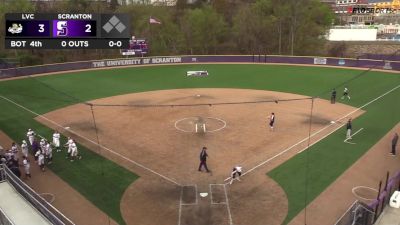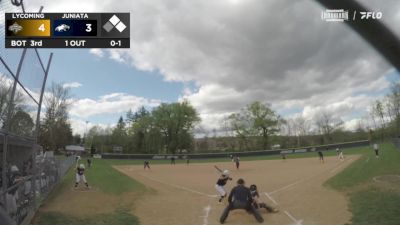The Early Recruiting Dilemma (Part 1)
The Early Recruiting Dilemma (Part 1)

Almost every high school and club sport is seeing athletes being offered—and committing to colleges—at younger and younger ages. It’s not unusual to see 14-year-olds making verbals today, which carries risks for both athlete and university. Here, in the first of a two-part series, we take a more in-depth look at the issue…
By Brentt Eads
By all accounts, Ally Shipman is one of the top softball players in her class. A smooth-fielding catcher, the standout from Valencia High in Valencia, Calif., is known for her defensive prowess, sound mechanics and ability to manage pitchers like a seasoned college backstop.

In November, after visiting major softball programs like Arizona State, Florida, LSU, Michigan, Missouri, Oregon, Texas and UCLA—each of which would have gladly taken the talented recruit—Ally made it official when she committed to Tennessee, where her sister, Madison, is an All-American shortstop.
But Ally will never get to play with her sister for one simple reason: Ally is an eighth grader.
Barely 14-years-old, the highly coveted prospect won’t step on the Tennessee campus as a scholarship athlete for another four and a half years, longer than she’ll actually play for the Vols.
Shipman is one of a handful of junior high players in softball who have already committed to major programs and there’s at least three dozen softball freshmen across the country who’ve also finalized their college plans.
Amazingly, softball experts say most colleges have long spent their budgets for not only 2014 recruits—current seniors—but also for juniors as well and many are running out of money for sophomores.
For that reason, prospects and their families are feeling the pressure to commit earlier and earlier and it’s a trend that has both sides, colleges and recruits, worried.
All sports are seeing earlier offers
It’s not just a softball phenomenon, either.
Not all that long ago, football prospects would take up to five trips in the fall of their senior year and decide where to go in the weeks prior to Signing Day in February.
Penn State, though, back in the 1990s, realized that with elite players attending their summer camps it could get them locked up prior to their senior year of high school football. The Nittany Lions, under Joe Paterno, began offering scholarships not just to seniors at their camps, but to underclassmen as well.
Soon, Ohio State, Michigan and other conference schools followed the trend, which quickly spread across the nation.

One of the most high profile examples of pushing the limits came in 2010 when then-USC head coach Lane Kiffin extended an offer to David Sills, a 13-year-old quarterback from Delaware who committed to the Trojans, but obviously won’t be playing for Kiffin in the Pac-12. He just completed his junior season at Eastern Christian Academy of Elkton, Md.

In April of 2008, then-Kentucky Wildcat coach Billy Gillispie offered California eighth grader Michael Avery and within two weeks freshmen Vinny Zollo from Ohio and Jeremiah Davis from Indiana.
Interestingly, none of the three made it to the SEC school and by the time they graduated Gillispie was gone.
Colleges offer early because they want to lock up talent. Athletes commit early because, oftentimes, they don’t want to lose out of getting scholarship dollars.
While in football and basketball, where most offers are full-rides, the non-revenue sport athletes frequently have to jump on an offer early in the fear that if they don’t, it will go elsewhere and they will be left out in the cold.
In softball, there are 12 scholarships that usually are divvied up for about two dozen players on a team.
Baseball also offers partial scholarships with full-rides being the exception rather than the rule.
While coaches have to be cautious in passing out scholarship dollars, the trend to go younger has been pronounced.
“The landscape has changed significantly in baseball within the last 10 years,” believes Corey Rodriguez, the Milwaukee Brewers West Coast Supervisor of Scouting. “In the past few years, players committed before they were juniors, but now it’s very common to see high profile young players get scouted, recruited and offered.”
“You look at a recent event like the World Wood Bat Showcase in Jupiter, Fla. There were over 80 teams there and a majority of the coaches weren’t looking at all at the seniors, they were looking at the juniors and sophomores and even freshmen.”
In soccer, where 24 to 26 players make up a college team, there are 9.9 paid scholarships. StudentSportsSoccer.com editor Sheldon Shealer explains that there’s even a difference between men’s and women’s soccer recruiting approaches.
“Because women’s soccer has more scholarship availability, the colleges can offer girls earlier and take more risks because they have the great margin of error,” Shealer says. “Men’s programs have to wait to make sure the boys are more advanced because they can’t afford to waste money on a player that might not help them.”
Shealer says this means that there are a lot of sophomore offers on the girls’ side and junior offers for the boys.
“If you round up to 10 scholarships, you only have on average 2.5 full scholarships to work with per recruiting class. Most men’s classes will be 6-10 players coming in for a recruiting cycle so you are limited and that’s why the colleges wait until later to avoid giving money to a player who may have peaked at age 16.”
Will the coaches still be there?
If players are getting younger and younger when they commit and then it’s a longer and longer wait until the start of college, the obvious question arises about what happens if the coach that recruited the eighth-grader or freshman is no longer around three or four years later? Will the scholarship still be honored?
Gerry Quinn, the founder of the Illinois Chill softball organization, remembers when his daughter, Kelly, was offered and committed to Northwestern in the summer of 2006 heading into her senior season.
“She was the second of five commits and the other three committed during their senior year,” he explains. “Back then, it wasn’t uncommon to do official visits in the fall; now an official visit is basically a victory lap.”

Quinn now has players going to programs like Penn State, Pittsburgh, Northwestern and Wisconsin. Some of them are getting offers during their freshman year of high school and he too is worried about the possibility of coaching changes leaving committed players without an offer.
“With all the early verbals and frequent coach migrations, it is going to become a lot more common,” he states. “It is hard to hire a coach if you tell the coach she has to honor the prior coach’s verbals for the next four years so I believe it is common to allow the ‘new’ coach to re-evaluate the players who verbaled to the ‘old’ coach.
“You can imagine that with schools taking verbals from eighth graders and high school freshmen, it is possible there is going to be some shifting that takes place between the time something is promised and the time something is delivered.”

When Ally Shipman took unofficial visits to campuses across the country, she made sure to inquire about the coaching staff and whether they intended to stay put.
“We asked every school I visited if the coaches will be there when I get to college,” she says. “Some said, ‘Totally’ and some said ‘I hope we’re still here.’ That worried me, honestly, but at Tennessee they straight up said they’ll be there.”
Ally’s father, Bill Shipman, is her club coach on the So Cal Choppers-Shipman/Ziese 16U team and he’s been through the process before when Madison committed in December 2007 to Tennessee halfway through her sophomore year.
Shipman knows that young athletes often get caught up in the recruiter’s personality and fail to consider the adult they admire may not be there down the road.
“You have to look at schools where there is a track record with stability and you have to choose the school, not just the coach. Don’t get me wrong, you choose coaches too, but you are going to a school to get an education so you need to be happy with where you’re at no matter who is at the head of the team.”
***
In The Early Recruiting Dilemma Part 2, we look at where early recruiting may be headed in all sports…
Related Content
 Replay: Queens University vs Campbell - DH - 2024 Queens (NC) vs Campbell | Apr 24 @ 7 PM
Replay: Queens University vs Campbell - DH - 2024 Queens (NC) vs Campbell | Apr 24 @ 7 PMApr 25, 2024
 Replay: Davenport vs Wayne State (MI) - DH | Apr 24 @ 3 PM
Replay: Davenport vs Wayne State (MI) - DH | Apr 24 @ 3 PMApr 25, 2024
 Replay: Georgia Southern vs Charleston | Apr 24 @ 5 PM
Replay: Georgia Southern vs Charleston | Apr 24 @ 5 PMApr 24, 2024
 Replay: Queens University vs Campbell - DH - 2024 Queens (NC) vs Campbell | Apr 24 @ 5 PM
Replay: Queens University vs Campbell - DH - 2024 Queens (NC) vs Campbell | Apr 24 @ 5 PMApr 24, 2024
 Replay: Fordham vs Hofstra | Apr 24 @ 4 PM
Replay: Fordham vs Hofstra | Apr 24 @ 4 PMApr 24, 2024
 Replay: Lycoming College vs Juniata - DH - 2024 Lycoming vs Juniata | Apr 24 @ 5 PM
Replay: Lycoming College vs Juniata - DH - 2024 Lycoming vs Juniata | Apr 24 @ 5 PMApr 24, 2024
 Replay: Lebanon Valley vs Scranton | Apr 24 @ 5 PM
Replay: Lebanon Valley vs Scranton | Apr 24 @ 5 PMApr 24, 2024
 Replay: Indiana vs Butler | Apr 24 @ 4 PM
Replay: Indiana vs Butler | Apr 24 @ 4 PMApr 24, 2024
 Replay: Lycoming College vs Juniata - DH - 2024 Lycoming vs Juniata | Apr 24 @ 3 PM
Replay: Lycoming College vs Juniata - DH - 2024 Lycoming vs Juniata | Apr 24 @ 3 PMApr 24, 2024